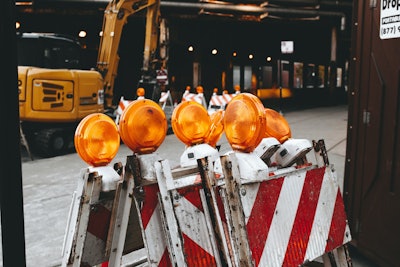
Summer is the time of year for numerous construction projects. Unfortunately, it’s also the time of year when workers are most exposed to the dangers of excessive heat, sun exposure, lightning strikes, and other environmental hazards.
Each summer, thousands of workers suffer sunburns, dehydration, heat cramps, heat exhaustion, and heat stroke. As a result, these workers become sick on the job and some even lose their lives due to excessive exposure to heat.
Summer is also the time of year where sudden, heavy rainfall and lightning can contribute to slips, falls, and, electrocution.
Whether you’re a rental business owner, contractor, project manager, or part of a safety team, it’s important to understand how heat can affect the body, recognize the signs and symptoms of heat-related illnesses, and know how to respond if a worker is experiencing a heat-related illness.
It’s also important to keep eyes and ears tuned to weather reports. Thunderstorms can form rapidly and bring with them heavy rains, strong winds, tornadoes, and deadly lightning strikes.
Beat the Heat
“Summer is the time of the year when construction ramps up, but it’s also a time of year when we need to think of how to protect ourselves from the elements,” said Herc Rentals Senior Safety Director Bill Cobb. “Drinking plenty of water, using sunscreen, and rest breaks are some of the easiest protective measures to take.”
Drinking fluids and frequent shaded breaks can help prevent dehydration, which can often lead to heat cramps and heat exhaustion, Cobb said.
Additionally, managers can provide a range of equipment to keep their crew cool and comfortable, especially on jobsites where shade or airflow is minimal. Equipment like portable air conditioning units, industrial fans, and breezers that shoot out a cooling mist are now almost as common on a summer construction site as a water cooler.
Keep your team safe from heat-related illness by following these tips:
- Stay hydrated. Drink water or other non-caffeinated beverages with electrolytes. Avoid designer beverages. Anything with caffeine is a diuretic and should be avoided.
- Do the most strenuous work early when outside temperatures are at their coolest. Or see if the work can be done at night.
- Take frequent breaks in extreme heat and humidity. Find shade or cool off in an air-conditioned building.
- Eat a big breakfast and stay away from junk food at lunch. Eating a light lunch with fruits, vegetables, or a salad can help minimize the afternoon slump.
- Watch out for your teammates and look for signs of heat exhaustion. These signs could include disorientation, slurred speech, stumbling, or dropping tools and more.
“By taking proper precautions and training team members to recognize the early signs of heat injuries, you’ll better protect your team and reduce the risk of heat-related injuries significantly,” Cobb added.
Sun Solution
While heat-related illnesses remain a chief safety concern, overexposure to the sun’s powerful UV rays can result in long-term health issues. “Outdoor workers should always try to keep covered as best they can,” Cobb said.
Some tips to protect your team against the sun include:
- Wear light-colored, loose-fitting, breathable clothing. If possible, wear full sleeve shirts, nape protectors, cooling vests, bandannas, etc.
- Wear safety glasses with UV protection and brimmed, vented hard hats as protection from the sun.
- Wear a sunscreen that stays on when sweating .
- Try to work in shaded areas. Use canopies or umbrellas to avoid direct sun exposure .
Summer Storms
Of course, the heat and sun aren’t the only threat to a jobsite during the summer months. Thunderstorms and heavy summer rains can turn a worksite into a mess. Strong winds can send worksite debris flying and topple equipment, while heavy rains can turn the ground into a mud pit, causing workers to slip and fall.
“It’s important to prepare for every situation that may arise,” Cobb said.
That includes taking normal and common-sense precautions like heading inside if lightning is seen in the area and wearing waterproof work boots with ethylene-vinyl acetate (EVA) soles to prevent slips.
The Right Gear
The right gear can also help keep workers safe and your project running smoothly even if summer weather isn’t being cooperative.
Preparing a safe, summer worksite can also mean having gear on hand that’s designed to prevent injury, damage to other equipment and keep your project on schedule. Here are just a few pieces of equipment to consider:
- Portable LED light tower with a higher wind rating. The higher the wind rating, the less likely it will tumble and potentially hurt someone during a thunderstorm or wind event.
- Gas-powered generator. A lightning strike or wind can easily knock out shore power and set your project back hours or longer.
- Pumps. Standing water from day-long rain events can not only create a messy worksite, but also contribute to slips and falls. Pumps will accelerate the drying process on your project.
- Ground protection. Heavy rain and dirt create mud. Ground protection will keep trucks and equipment from getting stuck in it and your workers from risking injury trying to dig it all out.
Have a great summer, and always think safety.



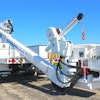
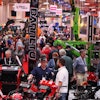

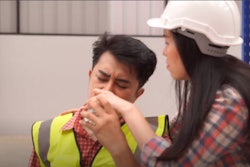
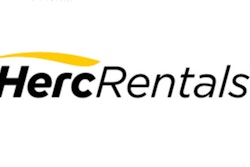


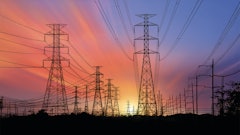



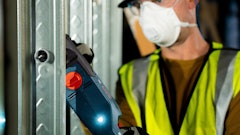

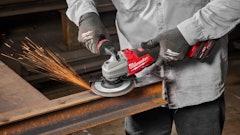

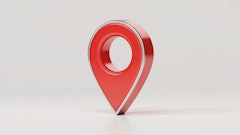

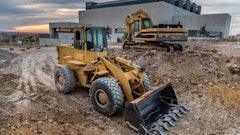
![Building Angled Sm Edit 6050b8d213f1b[1]](https://img.forconstructionpros.com/mindful/acbm/workspaces/default/uploads/2025/09/building-angled-sm-edit6050b8d213f1b1.Ygq5aAos3b.png?ar=16%3A9&auto=format%2Ccompress&crop=focalpoint&fit=crop&fp-x=0.53&fp-y=0.23&fp-z=2&h=135&q=70&w=240)